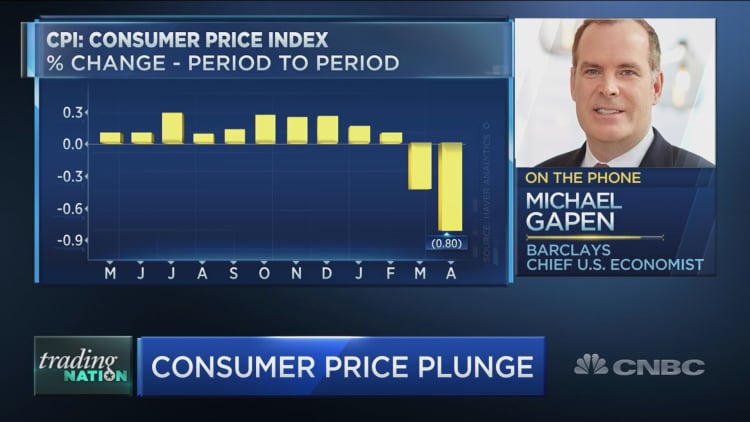High unemployment could linger longer than expected in the U.S. because of policies that discourage workers from returning to their jobs, according to Goldman Sachs.
Both the U.S. and Canada have adopted measures that pay workers to be sidelined, whereas others including Japan, Germany and the U.K. focus on subsidizing employers to maintain staff.
The end result, according to Goldman chief economist Jan Hatzius, is a situation where the U.S. jobless rate still will be around 12% by 2020 and 8% by the close of 2021, about double some other developed nations.
"While the vast majority of job losers in the US (and also in Canada) are on 'temporary layoff' for now, the ties with their former employers will likely weaken over time," Hatzius said in a note authored with Goldman economist Daan Struyven. "This means that more workers will need to find truly new jobs than in a European-style system that relies more on preserving existing employment relationships via wage subsidies."
The analysis comes amid the worst unemployment crisis since the Great Depression and one that already is far worse than the financial crisis, when unemployment peaked out at 10%. April's jobless rate was 14.7%, and Goldman expects the U.S. to top out around 25%, which would be comparable to and perhaps slightly worse than the Depression. The national unemployment rate was at a 50-year low of 3.5% before the coronavirus crisis.
Most of the 20.5 million workers who lost jobs during the month said they expected the separations to be temporary. However, economists say that as the shutdown continues, more of those moves are likely to be permanent.

Across the country, 43 states have set new unemployment rate records. Nevada, with the hit to its gaming industry, is the worst at 28.2%, followed by Michigan at 22.7% and Hawaii at 22.3%, according to the Labor Department. Connecticut has the lowest rate, at 7.9%.
To combat the crisis, the U.S. has adopted twin policies of providing loans for companies to maintain payrolls over an eight-week period, and paying many displaced workers their salaries plus $600.
On the upside, Hatzius said those measures will provide recipients with spending power that could allow for a fairly strong recovery. But on the downside, the programs could discourage workers from heading back to their jobs, where they would receive lower pay than what they're getting from the government.
The measures, which resemble what Canada is doing, "have created significant incentives against maintaining existing employment relationships," Hatzius wrote.
The unemployment compensation plan expires July 31. Goldman expects a compromise measure to reduce the payment to $300 above salary. Taken together, the measures could keep household disposable income around its pre-pandemic levels, Goldman said.
"We conclude that the US unemployment crisis will not stand in the way of a near-term economic recovery but is also unlikely to go away quickly. Although the uncertainty is unusually large, we still see the US unemployment rate around 8% in late 2021, well above the levels in most other advanced economies," Hatzius wrote.


